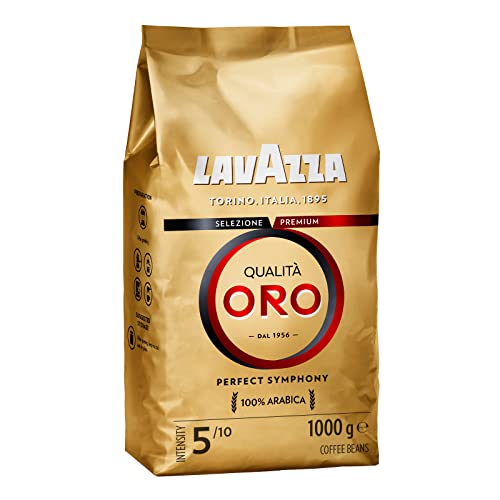How Do You Explain Types Of Coffee Beans To A 5-Year-Old

Types of Coffee Beans
Behind every cup of coffee that we enjoy, there are carefully graded beans. These beans are graded on color, size and shape.
The AA rating is given to coffee beans that meet the criteria above, except that they can't contain more than three defects (quakers). They are typically Kenya AA beans.
Arabica
Arabica coffee beans are also known as Coffea Arabicica and are the most sought-after coffee bean in the world. Legend has it that coffee was discovered in Ethiopia when goat herders noticed their herd swaying with more energy after eating the fruit of the coffee plant. This led him to study roasting and brewing the seeds, creating the beverage we now know and love today.
There are a myriad of varieties of coffee plants, however only two are used in the production of our top brews, arabica and robusta. The former is generally considered to be superior to the latter and this is reflected in the taste of the final beverage.
There are a variety of different cultivars of arabica, with every one having their own distinct flavor profile. Typica and Bourbon are two of the most sought-after arabica cultivars. All other arabica varieties were derived from these two varieties, either by natural mutations or deliberate crossbreeding. Scott Labs developed the SL28 cultivar in Kenya, which is known for its distinct chocolate flavor.
The flavor of a particular arabica variety is determined by the climate in which it is cultivated, and also how it is handled and roasted. For instance, the kind of shade a tree gets as well as its altitude and soil composition can all play an important part in the final flavor.
Robusta
Robusta coffee beans, also referred to as coffee canephora, are the second most popular variety of coffee beans. They are used in the majority of instant coffees, and they contain twice the amount of caffeine as Arabica Coffee Beans. They are also used to make a variety of espresso blends specifically for cappuccino caffe latte and other beverages that are coffee-based.
Coffea Canephora is an African plant that was first discovered in Sub-Saharan Africa. It has been grown all over the world since. It is able to grow at lower altitudes and can tolerate higher temperatures than the Arabica coffee plant, which makes it a more convenient crop for farmers. Vietnam is currently the largest producer of robusta coffee followed by Brazil and Indonesia.
Although the robusta plant has its advantages however, it's not as adored by cupping enthusiasts for its bitter taste and smoky rubber notes. Most large coffee companies use arabica beans to make their premium coffees because it's regarded as a lower-quality coffee.
The demand for premium coffees is growing, and small roasters are experimenting to capitalize on its outstanding qualities. Our Valhalla Java and Death With Coffee are two exceptional robusta coffees, which are mixed with arabica for the perfect balance of flavour and strength. These coffees come from Uganda, a country where robusta has been grown for a long time. You can read more about them here.
unroasted coffee beans are scarce and aren't used much around the globe. They account for less than 2% of the world's coffee bean consumption and are often overlooked because they don't contain the same amount of caffeine that Arabica and Robusta do. These beans have a distinctive taste that many coffee drinkers find appealing.
Despite their rarity, Liberica coffee beans are still popular in a few regions of Asia. They are most popular in Malaysia and Indonesia, which have an extensive Muslim population. In these countries the coffee industry has been active for many years. The consumption of a cup of coffee after prayers is a part of their culture.

Liberica coffee's history dates back to the 1890s after a worldwide epidemic caused by rust on the coffee leaf destroyed the arabica crop. This triggered coffee makers to search for an alternative species that could thrive in tropical climates, and they quickly discovered the Liberica plant.
Liberica plants have a high tolerance to diseases and pests making them a perfect replacement for the devastated arabica crop. Liberica also has the capacity to grow in hot temperatures and lower altitudes, which enabled it to thrive in the climate of Southeast Asia. This is why, in the present, most of the coffee produced in the Philippines, Indonesia, and Malaysia is derived from Liberica beans.
Excelsa
Although it's not common for coffee lovers to come across excelsa beans, they are now gaining an image for their unique flavor. According to Komal Sable of South India Coffee Co. who is a fifth generation coffee farmer the beans have a teardrop-like shape, however they are smaller. It's important to keep in mind that, despite the resemblance of family between excelsa and liberica but this is not a separate one.
It's a little bit confusing as to how excelsa beans should be classified, and it's this confusion that has largely been the cause of the beans' insignificant presence in the world of coffee. Many roasters, growers and brewers are unaware of how to properly cultivate and utilize these beans.
It's ultimately the individual's responsibility to decide if he or she likes the flavor of excelsa, and it could take a while to find the perfect blend. The most important thing is to remain open-minded and give each type of coffee a shot until you discover one you truly love. When you do this you'll be able to enjoy the full variety of possibilities these unique beans can offer. It's a trip that's worth the journey.
